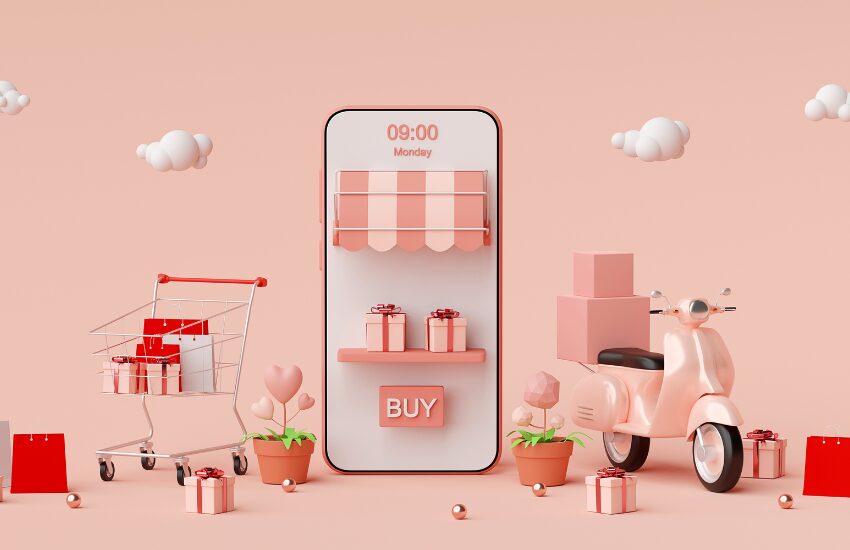Photography for ecommerce products is a crucial element for online businesses looking to increase conversions and build trust with their customers. High-quality product photos provide detailed, accurate depictions of your products, helping potential buyers make informed decisions. In this guide, we’ll explore the key types of ecommerce photography, the ideal setup, editing tips, and how to use these images to enhance your ecommerce strategy. Creative services in photography, especially tailored to ecommerce, ensure that these images are optimized for both visual appeal and functionality.
| Key TakeawaysProduct photography is essential for increasing conversions and building trust with customers through high-quality images. Types of photography for ecommerce products such as studio, lifestyle, 360-degree, and close-up shots effectively showcase products and meet customer needs. A professional setup with proper lighting, a clean backdrop, and consistent camera settings results in clear and polished images. Image editing enhances product details, reflects true quality, and helps boost sales by creating accurate and attractive visuals. |
What is Photography for Ecommerce Products? Types, Setup, and Editing Tips
Photography for eCommerce products is an essential aspect of online retail, helping to showcase products in the best possible light to attract customers. In this section, we will explore the different types of product photography, tips for setting up your shoots, and key editing techniques to ensure your product images stand out and drive sales.
What is Photography for Ecommerce Products?
Photography for ecommerce products is the art of capturing high-quality images that are specifically tailored to showcase products on online stores. These images are crafted to highlight a product’s features, quality, and finer details, helping potential customers make confident and informed purchasing decisions.
For instance, consider a fashion wristwatch: an e-commerce product photo would display the sharpness of the dial, the shine of the metal strap, the branding on the face, and the overall craftsmanship of the item. These visual cues not only communicate the product’s value but also convey a sense of style and quality that a shopper is looking for online.
The key difference from traditional photography is that ecommerce product photography is optimized to drive conversions. It’s not just about taking a beautiful photo, it’s about producing clear, accurate, and visually engaging images that help the customer imagine owning the product. This approach builds trust and bridges the physical gap between the buyer and the product in the digital space.
Types of Photography for Ecommerce Products
Depending on the product type, various photography styles can be tailored to suit your ecommerce needs, ensuring your images not only meet platform standards but also resonate with customers’ needs and lifestyles, enriching their shopping experience. Let’s explore some of the most popular photography styles below:
- Studio/Product Photography: The technique focuses on creating clean and minimalistic images, with the product placed against a white or neutral background. It is commonly used for showcasing items such as electronics, jewelry, or accessories. The main goal is to ensure that all attention is directed solely to the product, without any distracting elements.
- Lifestyle Photography: The product is depicted within its authentic context or in use by an individual. For instance, a set of headphones may be photographed in a comfortable living room setting or during an outdoor exercise. This technique assists consumers in envisioning how the product integrates into their everyday routines.
- 360-Degree Photography: Enabling customers to view the product from every angle, offering a comprehensive perspective. It’s particularly useful for products like furniture, footwear, and tech gadgets, where customers want to see all sides and finer details.
- Close-Up Photography: Focuses on capturing the finer details of ecommerce products, such as the stitching on a leather bag, intricate designs on jewelry, or the texture of fabric. These detailed shots showcase the product’s craftsmanship and quality, giving shoppers a clearer sense of what to expect. For example, in clothing photography for ecommerce, zooming in on stitching or fabric texture adds credibility and builds buyer confidence.
How to Set Up Photography for Ecommerce Products
Setting up for photography for ecommerce products requires attention to detail to ensure the images are of the highest quality. Here’s how to set up the perfect photoshoot:
- Lighting: Proper lighting is essential to achieve clear and vibrant images. Softbox lights or ring lights are ideal for eliminating shadows and providing even, diffused lighting. A well-lit product photograph ensures it looks professional and appealing.
- Backdrop: A clean, white or neutral-colored backdrop ensures the product remains the focal point. Avoid cluttered or busy backgrounds that can distract from the product’s features.
- Camera and Equipment: A DSLR or mirrorless camera paired with a tripod is necessary for stability and sharpness. For close-up shots, a macro lens can help capture intricate details. Be sure to adjust the camera settings for the best exposure and depth of field.
Editing Tips for Ecommerce Product Photography
Once the shoot is done, editing is crucial in turning good photos into standout images. It improves visual appeal and ensures consistency across your ecommerce platform. Here are some simple yet effective editing tips to enhance your product photos:
1. Adjust Brightness and Contrast:
A well-balanced image should be bright enough to showcase every detail without being washed out or overexposed. Likewise, adjusting the contrast will help define shapes, bring out textures, and make the product pop. For example, in clothing photography for ecommerce, contrast adjustments can help fabrics look more textured and true to life, while maintaining a natural look.
2. Remove Backgrounds for a Clean, Professional Look:
Most photography ecommerce websites prefer a white or neutral backdrop, as it provides a uniform and distraction-free presentation. Use tools like Photoshop, Canva, or background removal apps to isolate your product. This technique is especially effective for platforms like Amazon or Shopify, where clean imagery boosts professionalism and customer trust.
3. Crop and Align for Uniformity Across All Products:
Cropping images to the same size ensures a neat, cohesive product display. Proper framing also aligns items in a grid layout, making it easier for customers to browse. Whether it’s shoes, gadgets, or cosmetics, maintaining symmetry across your catalog enhances your website’s overall appearance.
4. Enhance Product Details to Reflect Real-Life Quality:
Zoom in and retouch small details that may not be immediately visible in the original image. Highlighting textures, colors, stitching, or surface finishes makes the product stand out—especially for items like jewelry, furniture, or electronics. Sharpening features and adjusting saturation helps customers appreciate craftsmanship and quality without distorting the image.
How to Make Your Photography for Ecommerce Products More Professional
If you want your product photography to stand out and truly represent your brand, going beyond basic snapshots is essential. Here are some key tips to elevate your ecommerce photography to a professional level:
1. Maintain Visual Consistency:
Consistency is crucial in ecommerce photography. Use the same background, lighting setup, angles, and camera settings for all your product images. This creates a seamless, unified look across your website, which not only looks more professional but also helps customers navigate your product catalog with ease. A consistent visual style reinforces brand recognition and trust.
2. Use High-Resolution Images:
Always shoot in RAW format using a DSLR or mirrorless camera. High-resolution images give you more flexibility during post-production and ensure your photos remain crisp and detailed, even when zoomed in or viewed on large screens. Blurry or pixelated photos can negatively affect your store’s credibility, while sharp, high-quality images signal professionalism and care.
High-resolution files are essential in photography for products, where clarity, texture, and realism directly influence buying confidence.
3. Focus on Your Brand Identity:
Your product photography should reflect the tone and personality of your brand. If your branding is minimalist and modern, keep your photos clean, with neutral backgrounds and simple styling. If your brand is playful and colorful, use vibrant setups and creative props that complement your products. Aligning your photography style with your brand identity helps build emotional connections with customers.
4. Incorporate Props Thoughtfully:
In lifestyle shots, using props can add context and help tell a story, but they should never overpower the main product. Choose props that enhance the setting without distracting from the item you’re selling. For example, a coffee mug next to a notebook helps visualize a work-from-home setup, but too many objects can create visual clutter and confuse the focus.
Tips for Effective Ecommerce Product Photography
1. Optimize for Mobile Devices:
With the majority of online shoppers using smartphones or tablets, your product images must be mobile-friendly. Test your photos across different screen sizes to ensure they load quickly and display well on smaller devices. Responsive images can improve user experience and reduce bounce rates on your ecommerce website.
2. Use Natural Light When Possible:
Natural light provides a soft, balanced look that artificial lights sometimes fail to replicate. If shooting indoors, position your setup near a large window with indirect sunlight. This approach is especially useful for lifestyle photography, where the goal is to make the scene feel realistic and relatable.
3. Showcase Multiple Angles and Close-Ups:
Don’t rely on just one hero shot. Include images that show your product from different angles—front, back, side, and top views—along with close-ups of important features, textures, or unique details. This helps customers gain a full understanding of the product and reduces hesitation before purchase.
Just as detailed imagery is vital for ecommerce, it’s also essential in stages like awareness and engagement in a SaaS marketing funnel, where strong visual content helps build trust and guide prospects through their journey.
4. Avoid Over-Editing:
While post-processing is necessary to refine your images, be careful not to alter the appearance of the product too much. Over-saturation, excessive filters, or unrealistic retouching can mislead buyers and lead to dissatisfaction or returns. The goal is to present your product as accurately and attractively as possible.
By following these tips, you can create professional, high-impact images that elevate your online store, build customer trust, and ultimately drive more sales.
Why Do Businesses Need Quality Photography for Ecommerce Products? Standards and Benefits
High-quality photography is a powerful tool that impacts customer behavior, builds brand trust, and boosts sales. In online shopping, where buyers can’t physically touch or examine products, images become crucial for purchasing decisions. Creative services that specialize in photography ensure that your images look professional and build confidence in your products.
Building Trust and Credibility with Customers
Clear, high-resolution product images establish credibility with customers. Professional photos signal that your business is legitimate and your products are reliable. For example, detailed shots of luxury watches showcasing craftsmanship help customers trust the product’s value and authenticity, reducing hesitation for first-time buyers.
Increasing Conversion Rates
Quality visuals directly influence sales. Good photos present the product in the best light, eliminating uncertainty in the buying process. For instance, showing a dress from multiple angles, full-body shots, and fabric close-ups helps customers visualize fit and texture, increasing the likelihood of purchase.
Setting Your Business Apart from Competitors
In a saturated online market, stunning product photography can be the edge your brand needs. While competitors may rely on basic or outdated photos, investing in professional visuals helps your brand stand out. Take a skincare company as an example: clean, bright photos showing product textures, application methods, and real-life use cases (e.g., models applying the cream) will grab attention and convey professionalism. This kind of visual storytelling not only enhances your brand identity but also builds emotional appeal.
Customer Satisfaction and Reducing Returns
Mismatched expectations often lead to returns. High-quality product photos reduce this risk by offering accurate, comprehensive representations. Showing multiple angles and details ensures customers know exactly what they’re buying, leading to happier customers, fewer returns, and lower business costs.
Ecommerce Photography Standards
Your product images are often the first interaction a potential customer has with your brand, so they must reflect the quality and reliability of your business. Here are the core standards every ecommerce store should follow:
Consistency
Ensure all product images maintain a unified style, including background, lighting, camera angle, and color palette. Consistency creates a seamless shopping experience and strengthens your brand identity, whether using minimalist white backgrounds or styled lifestyle shots.
High Resolution
Always shoot in high resolution to ensure crisp, clear images across all devices. Low-quality or blurry images reduce appeal and consumer confidence. Shooting in RAW format offers flexibility in post-production, preserving fine details.
Accurate Representation
Honesty is paramount in ecommerce. Avoid excessive editing that could mislead potential customers. Your product images should be true to the item’s actual appearance, including its color, texture, and size. Misleading images can lead to dissatisfaction, negative reviews, and higher return rates, while accurate photos build trust and manage customer expectations effectively.
Proper Lighting
Lighting plays a crucial role in how your product is perceived. Use soft, diffused lighting to eliminate harsh shadows and evenly illuminate the product. Natural light or studio lights with diffusers are ideal. Well-lit photos bring out the true colors, textures, and finer details of your product, which is vital for categories like apparel, jewelry, or cosmetics where finish and tone matter.
Consistent Aspect Ratio
Stick to uniform aspect ratios, such as 1:1 for square images or 4:5 for mobile layouts, across your catalog. Consistency in sizing and framing also makes your website easier to navigate and gives it a polished, professional feel.
How Professional Photography Benefits Your Business
Improved Online Presence
High-quality product images instantly elevate the appearance of your ecommerce store. A professional presentation gives customers the impression that your brand is reliable, established, and worth their time. First impressions matter, and clean, sharp, well-styled photos go a long way in building that initial trust.
Stronger Branding and Versatile Marketing Use
Professional product photos can be used across various marketing channels, not just your website. Consistent, appealing images reinforce your brand message, whether for social media, email newsletters, ads, or printed catalogs. Each image contributes to a recognizable and reliable brand identity.
Better Engagement and Conversion Rates
Clear, attractive images naturally capture attention, encouraging customers to spend more time on product pages, zooming in on details, and comparing options. This increased engagement leads to higher conversion rates, as customers are more likely to purchase and share products they feel confident about.
In summary, investing in professional ecommerce product photography is not just about aesthetics—it’s about trust, conversion, differentiation, and long-term success. With the right visuals, you don’t just showcase your products—you elevate your entire brand experience.
Conclusion: The Importance of Photography for Ecommerce Products in Marketing
Enhance Your Ecommerce Strategy with Professional Photography
Product photography is essential in the world of e-commerce as it serves as a powerful tool to capture the attention of potential customers as well as build lasting brand recognition and drive higher conversion rates. High-quality, well-designed images not only showcase your products but also enhance the entire customer experience, promoting satisfaction and trust. Focusing on image quality can also help increase sales and gain more loyal customers.
Especially in the online shopping experience, where customers can’t touch or try the products, images act as the emotional bridge between the product and the buyer. For that reason, investing in professional product photography is a strategic move that every serious ecommerce business should prioritize to grow and succeed in the digital space.
If you’re looking for a reliable partner to elevate your product imagery, Golden Owl Digital is the ideal choice. Partnering with us ensures you get photography ecommerce services tailored to your business needs. Our professional team brings expertise in shooting for photography ecommerce websites, making your products shine across platforms and devices.
FAQs
- What are the best lighting setups for ecommerce product photography?
Softbox lights or ring lights are ideal for creating even, shadow-free lighting, ensuring your product looks its best.
- How many images should I include per product?
You should ideally include 4 to 7 images per product to give customers a complete view. These typically include the front, back, and side angles, a close-up to show details, and at least one lifestyle photo to illustrate real-world use. For certain products, a 360-degree view is also helpful to let customers explore every angle. This variety builds trust and helps reduce uncertainty before purchase.
- How can I make my product photography stand out?
Focus on consistent lighting, clean backgrounds, and high-resolution images. Using lifestyle photos and multiple angles can also help provide a fuller picture of the product.
- Why is 360-degree photography important for ecommerce?
It allows customers to view the product from every angle, giving them a better sense of its size, shape, and features before purchasing, especially for complex or high-end products.







